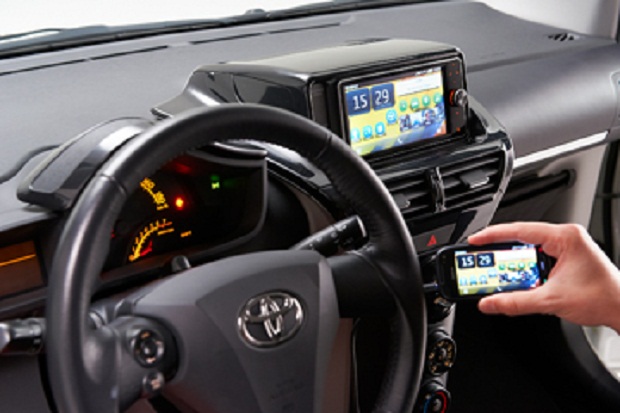MirrorLink: Your vehicle is now a smartphone app

According to the Connected Car Consortium (CCC), people are using their smartphone apps and services 80 percent of the time. The other 20 percent when they are not using them is when they are driving.
The CCC, which is made up of more than 80 percent of the world's automakers including BMW, Fiat, Ford, GM, Honda, Hyundai, Mercedes-Benz, Mitsubishi, Nissan, Renault, Toyota, and Volkswagen, has created a global standard for smartphone and in-vehicle connectivity, called MirrorLink. The technology replicates a smartphone screen on an in-vehicle infotainment (IVI) system's screen. How this is eventually done depends on the individual automaker.

A device interoperability standard that offers safe and seamless integration between a smartphone and in-vehicle infotainment system, MirrorLink can be customized to fit the overall look and design of each vehicle. Mobile developers can also design apps for IVI systems without having to learn an entirely new platform, but the the infotainment sytem must be MirroLink-compliant. The smartphone must also be installed with the software which can be downloaded.
MirrorLink transforms smartphones into automotive application platforms where apps are hosted and run on the smartphone, while drivers and passengers interact with them through steering wheel controls, dashboard buttons, and touchscreens of their car's IVI system.
According to MirrorLink, the standard utilizes a set of well-established, non-proprietary technologies such as IP, USB, Wi-Fi, Bluetooth, Real-Time Protocol (RTP, for audio) and Universal Plug and Play (UPnP). In addition, it uses Virtual Network Computing (VNC) as the baseline protocol to display the user interface of the smartphone apps on the IVI system screens and to communicate user input back to the smartphone.
That said, there are a few constraints. One is the IVI system itself. Most vehicles have factory installed systems, and others have aftermarket systems. Only a select few receivers currently work with MirrorLink and can physically fit into newer models. Alpine, Sony, and JVC already make in-car devices which use the protocol, and all Nokia and Samsung Galaxy SIII smartphones will also work with it.
But even when you have the smartphone and required IVI system, there's still one more issue: only approved apps can be used. Only apps tested and approved by the CCC will work with the in-car interface and controls. Not every app works well on the dashboard while driving as they can be distracting for the drivers, so the CCC is creating a standard for certifying apps acceptable for MirrorLink.
When aprpoved, drivers then can access their favorite apps. The apps must meet legal requirements for screens that are driver-facing. For example, the text must be a certain size and some functions such as typing must be disabled when the car is moving.
Eventually, the MirrorLink technology will stream other data from the car to the smartphone, including speed, location, and even weather. That information can be used to develop new apps or improve other services such as traffic news.